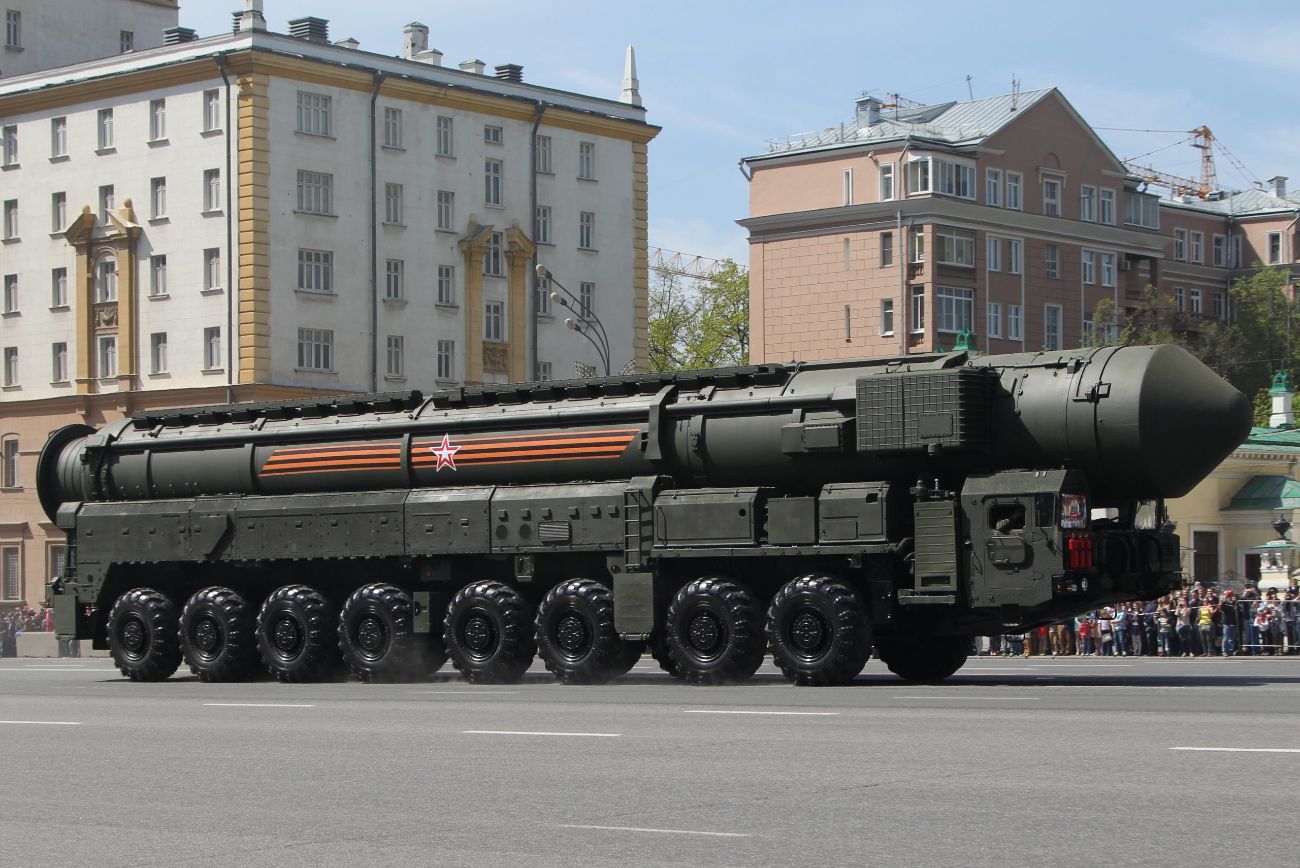Russia plans to conduct the second launch of the Sarmat heavy intercontinental ballistic missile (ICBM), which Putin earlier referred to as invincible, before the end of 2022, reported state-run Tass, citing sources.
The missile, called Satan 2 by Western analysts, is regarded as the world’s most powerful missile. Tass cited a military source as saying, “Until the end of this year, flight design tests (LCI) of the Sarmat can be continued with the second launch of the product.”
The report noted that the test would be conducted from the Plesetsk cosmodrome, and the rocket must strike targets at the Kura test site in Kamchatka. After evaluating the launch outcome, a decision will be made on deploying the first regiment of Sarmat ICBM.
The Strategic Missile Forces will initially get a regimental kit under the deal signed at the end of 2020. The report did not provide a precise timeline for putting the regiment on combat duty.
It is thought that at least five launches—one of which must be made through the South Pole—must complete full-fledged flight tests of ICBMs. In April, Moscow conducted the first test launch of its Sarmat ICBM.

The ballistic missile was also launched from Plesetsk in the northwest and struck targets on the Far Eastern Kamchatka Peninsula. Russian President Vladimir Putin boasted about the missile’s prowess at the time, claiming it could overcome any international anti-missile defense system.
Putin said that the missile would increase the Russian armed forces’ fighting capability and secure the country’s security from exterior threats.
The Sarmat missile was built at the VP Makeyev State Missile Center, which specializes in developing sea-based intercontinental ballistic missiles. According to the manufacturer, the Sarmat will protect Russia from external threats for the next 40 to 50 years.
According to Russian state media, the missile is unique in terms of its unrivaled speed, record-breaking range, maximum accuracy, and complete invulnerability when breaching anti-missile defense systems.
In the past, Moscow also released animated footage of Satan 2. In the video, an intercontinental ballistic missile can be seen launching out of a silo, followed by an illustration of it rocketing into space.
The video-game-like animation shows the ICBM as it travels over a hypothetical Earth in a high arc and unfolds its nosecone to reveal five nuclear bombs.
What Makes Russia’s ‘Satan 2’ Missile Powerful?
The Sarmat intercontinental ballistic missile, which can carry 15 light nuclear warheads at once and weighs 220 tons, is about 116 feet long.
These warheads are arranged as Multiple Independently Targetable Reentry Vehicles (MIRVs), allowing one rocket to strike multiple targets simultaneously.
The Satan 2 missile was developed to replace the R-36 or Voevoda, a Soviet-era intercontinental ballistic missile that NATO dubbed “Satan.” The missile system’s projected operating range is between 6,200 and 11,180 miles (10,000 to 18,000 kilometers).
Satan 2 is equipped with sophisticated guidance systems and, most likely, decoys to fool anti-missile defense systems. Experts believe this could be a few dozen extremely light decoys that simulate the warhead, resulting in a kill vehicle attacking the wrong object.

In an earlier statement, Vladimir Degtyar, CEO of the JSC Makeyev Design Bureau, highlighted that the new missile is a new generation ICBM with noteworthy performance characteristics. Because of this, it has already been referred to as an “engineering miracle” and the “crowning achievement in rocket technology.”
The head of Russia’s Strategic Rocket Forces, Colonel-General Sergei Karakaev, alleged that Sarmat missiles could reach the North and South Poles and other destinations.
Karakaev told the Zvezda TV channel that the new missile system’s power-to-weight ratio makes the trajectory adjustable, which enables missiles to be launched via various paths. Meanwhile, there are options for alternative trajectories, such as the potential for launching the missile into outer space.
He claimed that it would be difficult to detect this missile system using existing defense systems or those that may be created in the future. The missile is therefore viewed as a severe threat to the United States and its allies.
- Contact the author at ashishmichel@gmail.com
- Follow EurAsian Times on Google News




